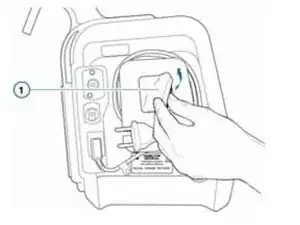
Air Intakes and HEPA Filter
For more information on troubleshooting, check out Hamilton-T1 Troubleshooting
The Hamilton-T1 Ventilator was released in 2017 for intelligent transportation ventilation. Hamilton Medical makes this device and many other intelligent ventilator devices. They have many ventilator models which are utilized globally and especially popular in the United States and Europe. The T1 model is portable and designed for transportation services including helicopters, ambulances, and airplanes. The T1 is also available in the US military ECAT catalog.
The Hamilton-T1 is more compact and lightweight than a typical ventilator. In order to reduce weight and space, it uses integrated high-performance turbine instead of gas cylinders and compressors. The device also utilizes Hamilton Medical’s standardized Ventilation Cockpit user interface and Adaptive Support Ventilation® (ASV®).
The Hamilton-T1 is rated for pediatric, adult, and neonatal ventilation. The T1 is also capable of primary, secondary, and intra-hospital transport. It is capable of over 9 hours of operation with both the integrated and hot-swappable battery installed and fully charged. The T1 is capable of regulating oxygen levels during non-invasive ventilation of between 21-100% with an external oxygen supply. The T1 has been tested for use in the military and under the hardest of conditions. The T1 device screen is compatible with night vision technology and may be powered by either an AC or DC external power. The device measures 24.5 x 31 cm without the handle and 29.8 x 31 cm with the handle.
More device specifications can be found on HAMILTON-T1 Technical Specifications page provided by Hamilton Medical.